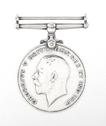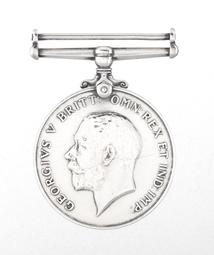Unit
11th Battalion
Branch
Canadian Railway Troops
Service Component
Canadian Expeditionary Force
Service Number
757889
birth
1874/05/16
Suffolk, United Kingdom, England
death
1944/09/27
Toronto, Ontario, Canada
grave
Union Cemetery, Oshawa, Ontario
Gender
Male
Charles Thomas Butcher was born 16 May 1874 in Lanaham, Suffolk in the United Kingdom to Samuel and Ann Butcher. Charles Butcher moved to Hamilton Ontario from Beverly, Yorkshire with his wife Annie and their daughter before 1916. Charles lived on Main Street in Hamilton and worked as a labourer.
Butcher attested to the Canadian Expeditionary Force (CEF) 25 February 1916 joining the 120th Canadian Infantry Battalion (City of Hamilton). He sailed with its initial draft, leaving Halifax 14 August 1916 in SS Empress of Britain. After a short stay in Bramshott, the unit was absorbed into the 2nd Canadian Reserve Battalion (Central Ontario) in February 1917. The next day Butcher was taken into the 3rd Canadian Labor Battalion and on 9 February sent overseas. This unit which, on 29 November 1917 would be renamed the 11th Battalion Canadian Railway Troops, was employed wherever needed by the British Army. In August 1917, the British were preparing for what would be known as the Third Battles of Ypres, a series of engagements that culminated in the Canadian Corps capture of Passchendaele in early November 1917. The first of these battles however took place at Pickhem Ridge just north of Ypres on 31 July in an unsuccessful assault by the British Fifth Army. Just to the west of this area the 3rd Canadian Labour Battalion was employed at Elverdinghe supporting the 1st Canadian Railway Troops putting in broad railway tracks to support the advance. They were evidently close enough to the action and the German counter attack caused some 16 casualties, 8 of which were fatal. One of those wounded was Butcher, in his right hand and back. He was evacuated to the South African Hospital at Abbeville for initial treatment and subsequently sent back to the United Kingdom. He was sent to the convalescent hospital at Epsom, then to Woodcote Park and finally to No. 16 Canadian General Hospital at Orpington where he was discharged in March 1918. He never recovered full function in his right thumb and was employed in base duties with the regimental depot at Shorncliffe. Some of these duties were with the Canadian Military Police - specifically with the sanitary police with whom he was briefly appointed acting Lance Corporal (unpaid) in May 1918. Upon reversion in rank in October 1918 he was ordered back to Canada for medical review and he arrived in Saint John, N.B. 10 November 1919 aboard SS Scandianvian. He received a medical board in Toronto and discharged as medically unfit 23 December 1918.
He returned to his family in Hamilton to resume his activities as a labourer. He secured employment as a gardener until his retirement in 1935. He died in Toronto 27 September 1944 and is buried in the Union Cemetery in Oshawa.



